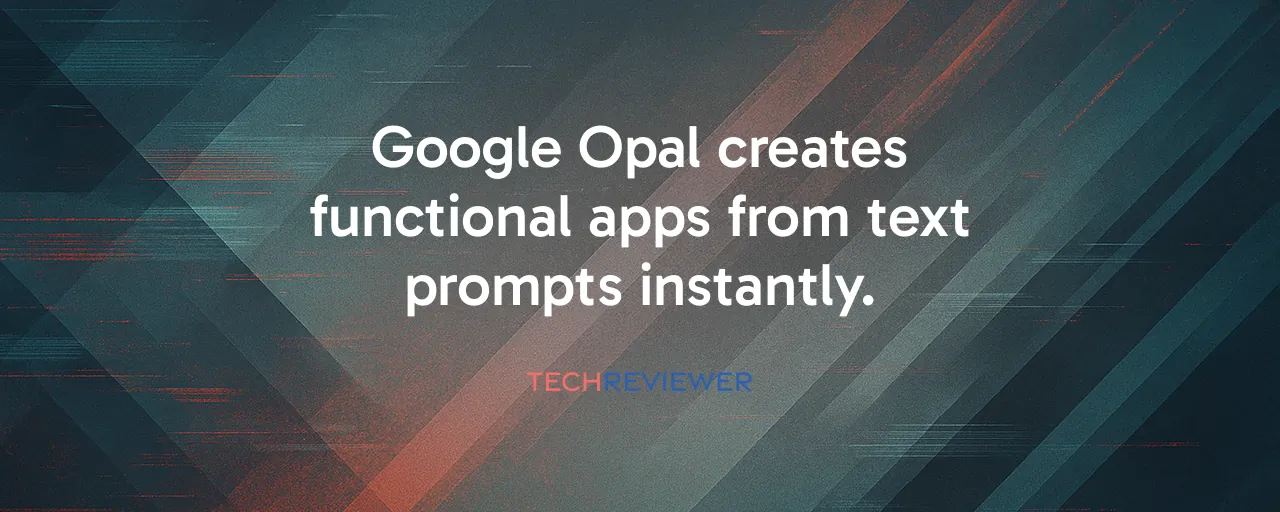A New Era of App Creation
You don't need to be a programmer to build a web app anymore. Google Opal, a platform that turns text prompts into functional mini web applications, has opened the door for anyone with an idea to bring it to life. Launched in the United States in July 2025 and now available in 15 countries, including India, Brazil, and Japan, Opal lets users describe what they want, and its AI models do the heavy lifting. The result? Small business owners, educators, and hobbyists are creating tools that solve real problems, from inventory trackers to custom learning platforms, without writing a single line of code.
What makes this shift so exciting is its reach. Non-technical users, who once relied on expensive developers or clunky templates, can now prototype ideas in minutes. Early adopters in the U.S. surprised Google by building sophisticated apps, far beyond the simple tools the company expected. This enthusiasm drove Opal's rapid expansion, signaling a growing demand for accessible app development. But as the platform spreads, it also raises questions about how these AI-generated apps hold up in the real world.
Real People, Real Solutions
Take the case of a small business owner in California who used Opal to build an inventory tracking system. Previously stuck with spreadsheets that couldn't keep up, she described her needs in plain English, and Opal generated a tailored app that synced with her existing processes. Within days, her team was managing stock more efficiently, saving hours each week. Similarly, an educator in Japan created a custom quiz platform for her students, replacing generic tools with one designed for her specific curriculum. These examples show how Opal empowers people to solve problems that matter to them, without needing technical expertise.
Contrast this with traditional development. Building an app typically requires months of coding, testing, and debugging, often costing thousands of dollars. Opal's visual editor, which lets users tweak inputs and outputs through a drag-and-drop interface, cuts through that complexity. Recent updates, like parallel processing and faster app creation (down from five seconds to near-instant), make it even smoother. Yet, for every success story, there's a user who hits a wall when their app needs advanced features or integrations Opal can't yet handle.
The Power and Perils of No-Code
Opal's strength lies in its simplicity. You type what you want, and the platform's AI models, backed by Google's vast research, generate a working app. Users can refine it through a visual workflow, tweaking steps or fixing errors without touching code. This accessibility has sparked a wave of creativity, especially in regions like Southeast Asia and Latin America, where access to traditional developers can be limited. Entrepreneurs in Brazil are prototyping business ideas, while community organizers in Indonesia build tools to coordinate local events, all at a fraction of the usual cost.
But simplicity comes with trade-offs. Generated apps may not scale well for high-traffic scenarios, and non-technical users might miss subtle bugs or security flaws. For instance, a poorly designed app handling sensitive data could expose vulnerabilities, a concern security experts emphasize. There's also the risk of over-reliance on Google's ecosystem, which could lock users into its infrastructure. While Opal's no-code approach empowers beginners, it can frustrate those needing deeper customization, pushing them back to traditional coding for complex projects.
Lessons From the No-Code Frontier
Opal's rise offers two key lessons. First, empowering non-coders drives innovation. When a researcher in Colombia built a data collection tool for her study, she bypassed months of learning statistical software, delivering results faster. This shows how no-code platforms can unlock creativity across fields, from education to science. Second, accessibility doesn't eliminate expertise. A marketing professional in Singapore used Opal to create a lead generation tool, but needed a developer to integrate it with her company's CRM. This highlights a hybrid future where no-code and traditional development complement each other.
Looking at competitors like Canva and Replit, Opal stands out for its AI-driven approach but faces similar hurdles. Canva's design-focused tools excel in visuals but lack Opal's app-building depth, while Replit targets coders with collaborative environments. Both have thriving communities, yet struggle with scaling generated outputs for enterprise use. Opal's challenge is balancing its beginner-friendly design with the flexibility power users demand, all while ensuring apps are secure and reliable.
What's Next for Accessible Development
As Opal spreads to diverse markets, its impact could reshape how we think about software creation. Non-technical users in developing regions gain tools to address local needs, like apps for community healthcare or education. But with great power comes responsibility. Regulators in countries like Canada and Japan are already questioning how AI-generated apps comply with data protection laws, while users worry about long-term platform stability given Google's history of retiring experimental products.
The bigger picture is clear: no-code platforms like Opal are lowering barriers, letting anyone with an idea contribute to the digital world. Yet, they don't replace the need for technical expertise. Instead, they create a new dynamic where coders and non-coders collaborate, each bringing unique strengths. As Opal evolves, its success will hinge on addressing scalability, security, and user trust while keeping the spark of creativity alive for its growing global community.
